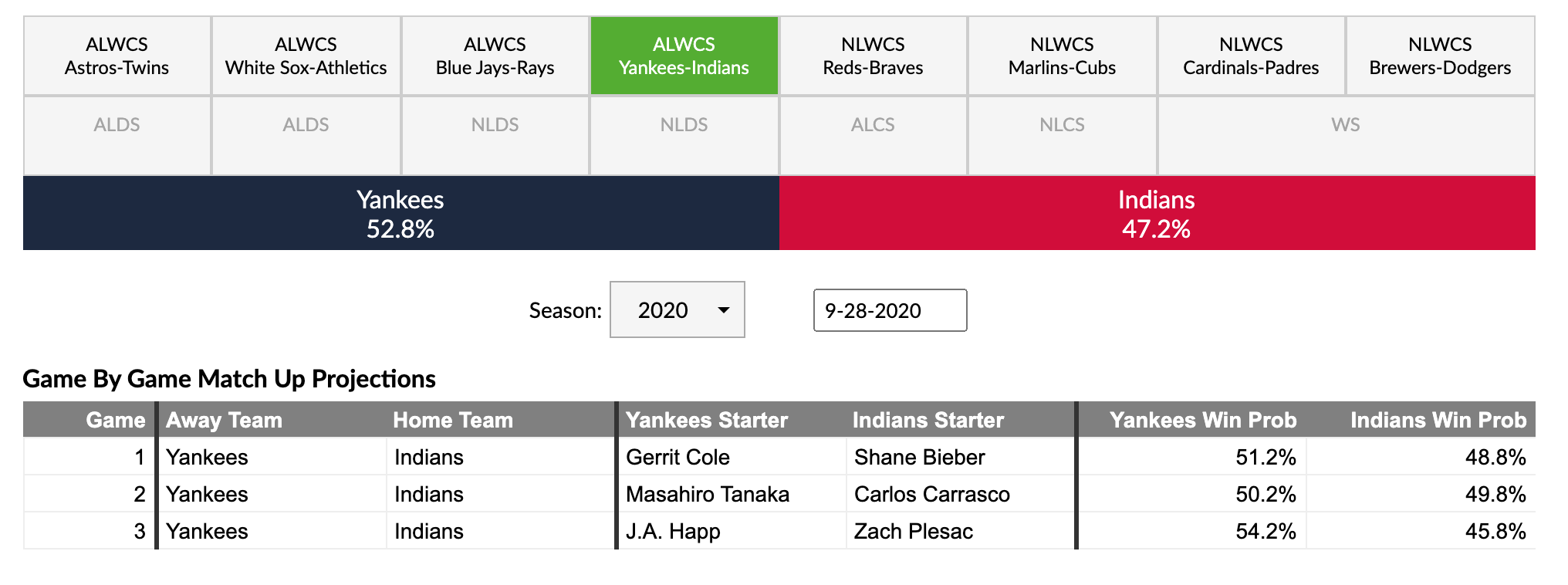The White Sox’s Advantage
The White Sox were one of the better hitting teams in baseball this season, posting a 114 wRC+ over their 60 games. What’s somewhat unusual, as was pointed out to me on twitter, is that they have done their damage by crushing left-handed pitching. Indeed, while that snippet of information might not making this next fact a complete surprise, the White Sox did not lose a start to a left-handed pitcher all season, winning all 14 of their matchups against southpaws. Later today, the A’s will send lefty Jesús Luzardo to the mound for Game 1 of their Wild Card Series against Chicago. What are we to make of this matchup?
The White Sox have a fine offense against right-handed pitchers, with a 106 wRC+, but their 143 wRC+ against southpaws was first in the majors this season:

The Tigers were close, though they put up their numbers in roughly 100 fewer plate appearances. On a seasonal level since integration, it doesn’t appear that any team has had at least 500 plate appearances against lefties and put up better numbers than the White Sox in 2020. Now a full season probably isn’t fair to compare to a shortened slate, so I went through our splits leaderboards, which go back to 2002, and looked at half-season performances that might rival what the White Sox have done:
| Team | Season | Half | PA | wRC+ |
|---|---|---|---|---|
| New York Yankees | 2019 | 2nd Half | 889 | 152 |
| San Francisco Giants | 2003 | 2nd Half | 479 | 146 |
| Chicago White Sox | 2020 | Short Season | 506 | 143 |
| Detroit Tigers | 2020 | Short Season | 400 | 142 |
| New York Yankees | 2004 | 1st Half | 1019 | 136 |
| Detroit Tigers | 2017 | 2nd Half | 654 | 134 |
| Philadelphia Phillies | 2007 | 2nd Half | 900 | 133 |
| St. Louis Cardinals | 2003 | 1st Half | 914 | 132 |
| Houston Astros | 2019 | 1st Half | 927 | 132 |
| Los Angeles Angels | 2014 | 1st Half | 1116 | 132 |
| Cleveland Indians | 2008 | 2nd Half | 751 | 132 |
| Los Angeles Angels | 2013 | 2nd Half | 765 | 132 |
| Toronto Blue Jays | 2015 | 1st Half | 812 | 131 |
| Los Angeles Angels | 2012 | 2nd Half | 736 | 131 |
| Houston Astros | 2019 | 2nd Half | 872 | 131 |
| San Francisco Giants | 2002 | 1st Half | 763 | 130 |
| Cincinnati Reds | 2011 | 1st Half | 734 | 130 |
| New York Yankees | 2007 | 2nd Half | 738 | 130 |


